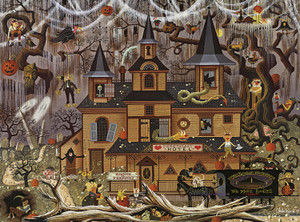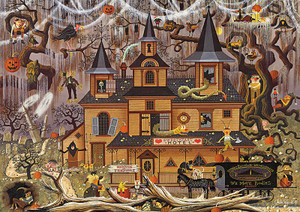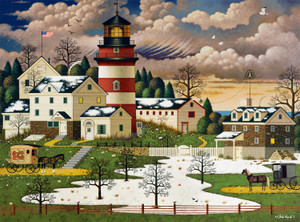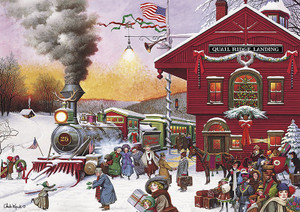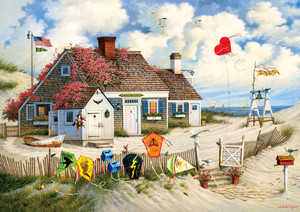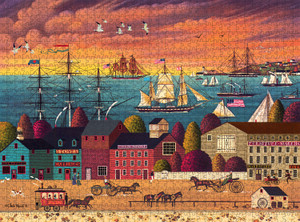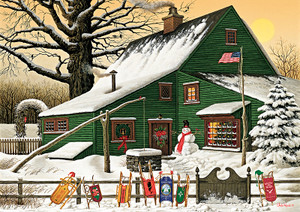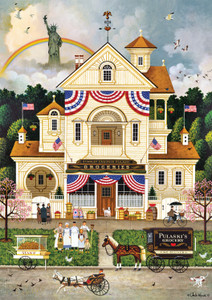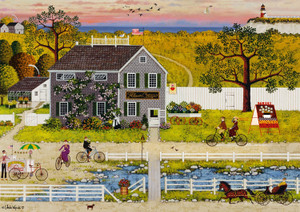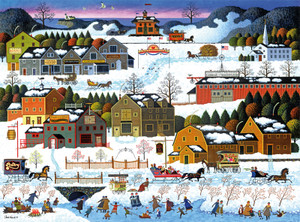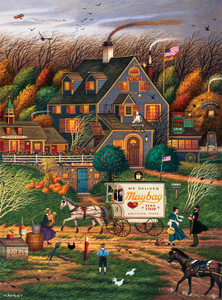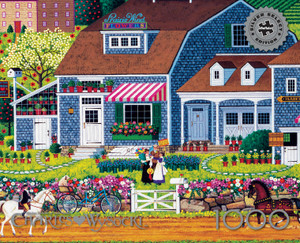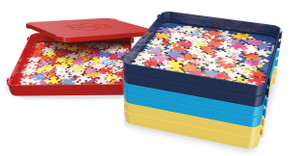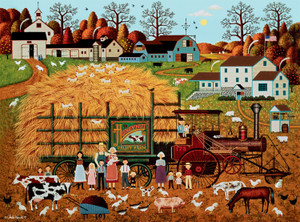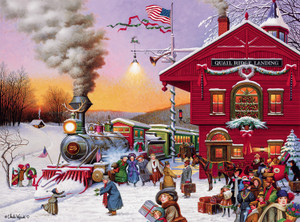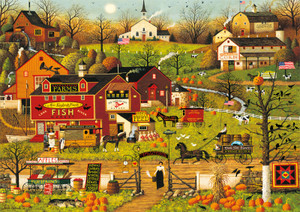Posted by Buffalo Games on May 5th 2022
What Is the Origin of Jigsaw Puzzles?
From kid-friendly 24-piece puzzles to master-level 2,000-piece puzzles, jigsaw puzzles are a hobby you can enjoy throughout your entire life. They're not just fun — they're good for your body and mind, too.
Jigsaw puzzles have been proven to have several impressive health benefits, including improving your short-term memory and boosting your problem-solving skills.
But have you ever wondered how this seemingly simple invention got its start? It might surprise you to learn that jigsaw puzzles have actually been around for hundreds of years. Given how popular they are today, it's not hard to see why this fun, brain-challenging form of entertainment has endured the test of time.
Keep reading to learn about the first jigsaw puzzle and how it sparked a love for puzzles that would eventually translate into a booming billion-dollar industry.
Early History
The earliest form of a jigsaw puzzle can be traced all of the way back to 1776, but they went by a different name at the time.
Mapmaker John Spilsbury created what he called a "dissected map" by mounting one of his maps on a slab of wood and then cutting around the countries to create several smaller pieces. He would distribute these "dissected maps" to local children as a way for them to practice geography. And with that, the puzzle-loving fire was lit.
Today, most jigsaw puzzles are made from thin but durable cardboard, but these early puzzles were made exclusively of wood. This construction made them extremely durable but also increased production time since every puzzle had to be carefully cut out by hand.
Still, the near-instant success of these early jigsaw puzzles influenced more mapmakers and woodworkers to get into the puzzle game — and everyone knows that heightened competition leads to innovation.
As a result, more images started being used for these "dissected puzzles" — it was no longer just maps. Religious imagery, farms, and other educational images were commonplace for puzzles at the time.
But puzzles were still largely just for kids. The hobby wouldn't catch on among adults for a few more decades. But once it did in the mid-1800s, the puzzle industry changed forever.
Advancements in Technology
Once adults realized how much fun puzzles could be, the demand for jigsaw puzzles for adults shot up. This demand led to an even wider array of images being printed on puzzles. For the first time, puzzles were made with the explicit purpose of entertaining rather than educating.
The puzzle industry didn't see its first period of rapid growth until towards the end of the 1800s, when three new technological advances came into play:
New Printing Methods
Lithographic printing was invented back in 1796 but did not become widely accessible until the late 1800s. Once puzzle makers started using lithographic printing, they were able to create much higher-quality puzzles that had more detail and brighter colors.
The Invention of Plywood
In 1865, the invention of plywood opened many doors for the puzzle industry. This new type of wood was thin yet durable and considerably cheaper than the cedar and mahogany wood that was typically used to create puzzles. The thinness of the plywood allowed puzzle makers to create more intricate shapes.
The Jigsaw
Jigsaw puzzles finally landed on their best-known alias after their namesake power tool, the jigsaw, was invented in the 1880s—this tool allowed for puzzles to be cut faster and with a higher level of precision.
The combination of these three inventions spurred continual growth and innovation among puzzle makers. They were now able to create countless new ways to challenge users, including new puzzle piece shapes, whimsical designs, and tricky color patterns.
Becoming an American Mainstay
Jigsaw puzzles cemented their place as an American mainstay during the 1930s as the country went through the Great Depression.
As more consumers felt the effects of the depression, they turned to jigsaw puzzles as a cheap form of entertainment and an easy way to distract themselves from the hardships they were surrounded by. This popularity led to a sharp uptick in demand, and the puzzle industry saw its first real boom.
At the onset of World War 2, plywood was in short supply, leading many manufacturers to switch to cardboard as a way to save money and keep prices reasonable. Cardboard is still the most common material used to make jigsaw puzzles today for the same reason.
The Second Big Boom
Puzzles never really died off; you could always find them on the shelves of most retailers. But their popularity did lull for a while. At the end of 2019 and the beginning of 2020, the world entered unprecedented times as countries worldwide began to enter lockdown.
During this time, jigsaw puzzles for adults experienced an immense surge in popularity, comparable only to the surge experienced during the Great Depression. With nowhere to go, millions of people began challenging themselves with these timeless brain teasers once more.
Jigsaw Puzzles Today
Even after the pandemic’s peak, puzzles are enduring as a popular pastime. This perseverance is primarily thanks to the unprecedented selection of puzzles on the market.
Today, puzzles come in every shape, size, and piece count, and the images used on puzzles span virtually every niche. It's no longer just landscapes, horses, and log cabins. A simple internet search will lead you to puzzles from all of your favorite movie and TV franchises.
There’s no denying that puzzles are made for everybody to enjoy with so many options. Whether you're looking for new ways to bond with your grandkids or hunkering down inside for a stormy weekend, you'll find that a 1,000-piece puzzle can be your greatest tool in the fight against boredom.
And although jigsaw puzzles have evolved significantly since their inception, you can still find kids' puzzles with carefully excised continents that are used to teach geography today.
These puzzles are reminiscent of the very first jigsaw puzzle and just go to show how well they have stood the test of time. So the only question left is, what jigsaw puzzle will you start next?




